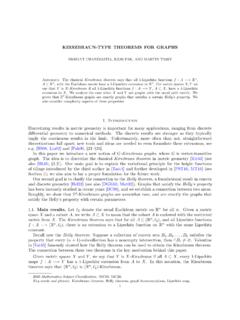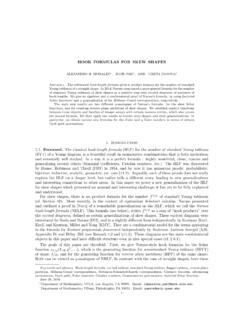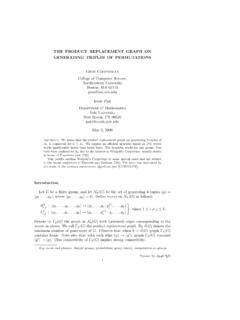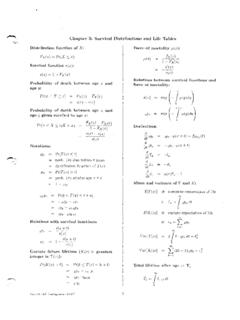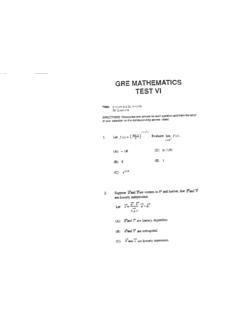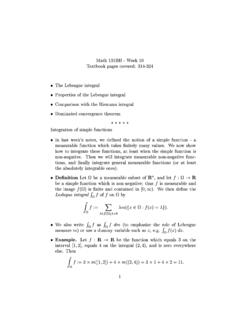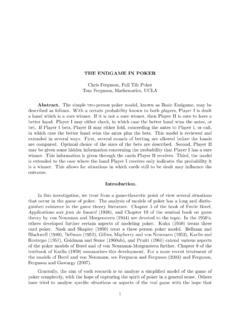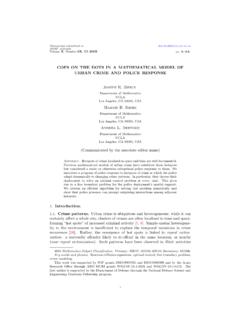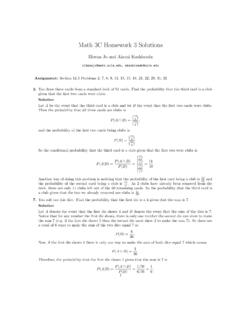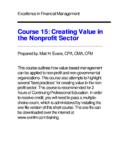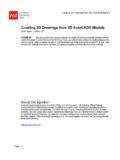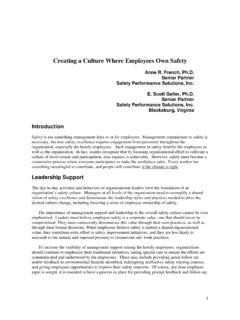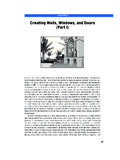Transcription of Creating A Grade Sheet With Microsoft Excel - UCLA
1 UCLA Office of Instructional Development Creating a Grade Sheet with Microsoft Excel Teaching Assistant Training Program 1 Creating A Grade Sheet with Microsoft Excel Microsoft Excel serves as an excellent tool for tracking grades in your course. But its power is not limited to its ability to organize information in rows and columns. Using formulas and functions in Excel , you can simplify the grading process. with Excel you can sort students by names, grades or whatever characteristics you choose. You can also setup a Grade curve in advance and have Excel automatically assign letter grades (not just percentages) to each of your students.
2 When you change the curve, the grades will change automatically. This tutorial will show you how to setup a grading Sheet in Excel that makes use of all these functions plus some other helpful features that will be explained in detail later. This tutorial assumes the reader has a basic understanding of how to navigate a spreadsheet and enter data in cells. A reader who is experienced with Excel and is familiar with entering formulas and the difference between absolute and relative cell references can begin in section three. Also, note that this tutorial is based on Excel 2000 for Windows. Everything in this tutorial with the exception of keyboard shortcuts will work in Excel for Mac.
3 1) Introductory Excel : Entering Formulas In Excel , formulas allow a user to make new calculations based on data entered into a spreadsheet. In simple terms a formula is made up of a combination of numbers, cell references and mathematical operators. To input a formula, click once on the cell in which you wish to enter a formula. Then click on the formula bar to begin entering your formula. In Figures and we have entered the number 1 in cell A1 and the number 2 in cell B2. We will add a formula into cell C3 to calculate the sum of cells A1 and B2. Note that after clicking on cell C3 we type the formula in the formula bar just above the worksheet.
4 Once the formula is complete, hit enter. Cell C3 now displays the result of your formula, the value 3. In other words A1+B1 = 3 because 1+2=3. Whenever you enter a formula into a cell, the cell will always display the result of the formula and not the formula itself. However, if there is a formula in the cell, it will be displayed in the formula bar. Figure Enter your formula in the formula bar. All formulas must begin with the equal sign. UCLA Office of Instructional Development Creating a Grade Sheet with Microsoft Excel Teaching Assistant Training Program 2 When entering formulas for your Grade Sheet , most likely you will use the typical mathematical operators to calculate your Grade formulas.
5 They include the following: Addition Subtraction Multiplication Division + - * / The order of calculation follows conventional mathematics. You can use parentheses to organize your formulas, but be aware that Excel calculates from the inside out where there are multiple sets of parentheses. For example, Excel calculates the formula =((2+3)*5) in the following way: 2+3 = 5 then 5 * 5 = 25 So the answer to the formula =((2+3)*5) is 25. Note that you always must have matching pairs of parentheses. If Excel finds they do not match it will give you an error message like that in Figure The error message in Figure appeared as the result of the formula =((2+3)*5.)
6 The correct version would be =((2+3)*5). Of course you could always mix cell references with numbers in your formulas. The formula =((A2+3)*5) would also equal 25. Figure Our formula has been entered in the formula bar. Note that while the formula itself shows in the formula bar, the result of the formula (3) shows in the cell. Figure UCLA Office of Instructional Development Creating a Grade Sheet with Microsoft Excel Teaching Assistant Training Program 3 Finally, note that capital letters were used in the formula in Figure It is not necessary to use capital letters. Excel doesn t care whether you use capitals or lower case letters when referencing cells.
7 You may want to use lower case letters simply because it means less typing (less use of the shift key). 2 Introductory Excel : Absolute and Relative Cell References One of the keys to building a working Grade Sheet is to understand the difference between absolute and relative cell references. with the ability to copy and paste cells (and thus formulas) in Excel spreadsheets, the difference between absolute and relative references is the difference between a right and wrong answer to your formula. This is critical when calculating student grades because a wrong formula may lead to you reporting the wrong Grade for a student.
8 Relative Cell References In a formula in which you use relative cell references, the cell references will change depending on where you copy the original in your spreadsheet. The best way to understand this is through an example. In Figure data has been entered in three rows and two columns. Your goal is to add the values across columns so that you have a result in the third column. In Figure , cell A1 will be added to cell B1 and the result will be placed in C1. A2 and B2 will be added with the result in C2, and A3 and B3 will be added with the result showing in C3. To begin, enter your formula in C1. Once the formula has been entered you can simply copy it into cells C2 and C3.
9 This is displayed in Figure Figure Figure UCLA Office of Instructional Development Creating a Grade Sheet with Microsoft Excel Teaching Assistant Training Program 4 If you look over Figure carefully, you will notice that the formula entered in cell C3 is different from that in cell C1. When you copied cell C1 to C2 and C3 the cell references automatically changed. This is because the cell references are in relative reference form. What this means is that the formula in cell C1 adds a cell two spaces to the left with a cell one space to the left. When you copy this formula to C3, two spaces to the left is A3 and 1 space to the left is B3.
10 Thus, where relative cell references are used, the cells that enter into the formula depend on the location in the spreadsheet of the formula itself. When you use an absolute cell reference, your formula will always reference exactly the same cell or cells no matter where you copy and paste your formula in your spreadsheet. We turn to absolute cell references next. Absolute Cell References Again, when you use absolute cell references in your formula, your formula will always point to exactly the same cell or cells no matter where you copy and past your formula in your spreadsheet. An absolute cell reference looks a bit different from the relative cell references used above.
